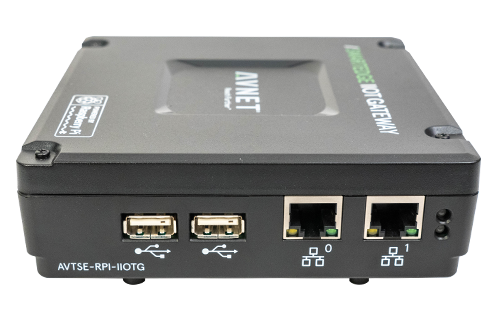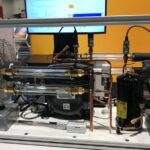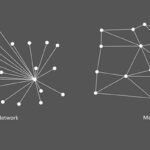By Cliff Ortmeyer, Global Head of Technical Marketing and Regional Marketing at Newark
Manufacturers often assume that data gleaned from the factory floor can only come from the newest machinery, built from the ground-up with built-in intelligence and network connectivity. Those seeking to modernize for what some call the fourth industrial revolution (Industry 4.0) are typically faced with the choice of either replacing everything or retrofitting legacy machinery for connectivity.
 These aging environments have legacy infrastructures that typically communicate through analog sensors that can be incredibly challenging to bring into the internet-connected world. But the good news is that innovations in digital technologies such as artificial intelligence (AI) and the Industrial Internet of Things (IIoT) are pushing more intelligence into even long-standing manufacturing facilities that have decades-old systems in place.
These aging environments have legacy infrastructures that typically communicate through analog sensors that can be incredibly challenging to bring into the internet-connected world. But the good news is that innovations in digital technologies such as artificial intelligence (AI) and the Industrial Internet of Things (IIoT) are pushing more intelligence into even long-standing manufacturing facilities that have decades-old systems in place.
A new market of smart devices has been built around this very premise. Bolt-on products offer
manufacturers the ability to capture data from existing equipment and connect it to AI-powered networks tied to the cloud, offering better efficiencies, cost savings, and new analytic capabilities like predictive maintenance. It’s a potentially huge market ready to be retrofitted for IoT success.
But does retrofitting rather than ripping out machinery make sense for all manufacturers? How can a business determine if their IoT strategy should be to retrofit, or to rip and replace?
Urgency matters
The first thing to consider is timing. Does the manufacturer have the luxury (and budget) to wait for a new factory floor? New equipment may bring more than just IoT advantages to a business, for example. If the existing machinery is old enough, the efficiencies and capabilities of newer models may outweigh the cost and time savings of adding connectivity to what a business already has in place.
But also consider that a typical rollout of new industrial IoT-equipped machinery takes approximately seven years to reach the market, get installed, and ramp up sufficient training. Retrofitting can dramatically shorten that time.
Today’s legacy machinery is typically connected to an industrial control system of Programmable Logic Controllers (PLCs), I/O modules, and other controls in self-contained systems. A new generation of industrial IoT gateways offers manufacturers the ability to extend the functionality of legacy equipment for Industry 4.0 applications. Some, such as Avnet’s SmartEdge Industrial IoT Gateway, are built on off the shelf SBCs such as the Raspberry Pi platform for simplicity and are industrial-hardened for volatile operational environments. The gateways often feature built-in analytics that allows manufacturers to connect and manage devices with little to no coding, and easy-to-use interfaces let them create applications faster than through laborious coding, saving time and money.
Beyond data?
Manufacturers should also consider if it’s just data that they need. Some might just want the ability to understand better how their equipment is performing and predict future changes. If that’s the case, adding connectivity and the ability to capture data could be the simplest route to better insights from the IIoT.
But adding IIoT connectivity isn’t always about just capturing data. Some manufacturers may seek to access equipment functions remotely, or to enable greater automation and adding connectivity won’t be enough. In these cases, it may prove more valuable to install new equipment that can provide enhanced functionality.
Connectivity and security needs
Security and connectivity are other key issues manufacturers need to consider when deciding to retrofit or rip out. In our day-to-day lives, Wi-Fi and cellular data are seemingly ubiquitous. For industrial equipment, however, the availability of these technologies is not always a given, and must be factored into the retrofitting decision.

If a secure network is already in place, retrofitting becomes a more viable option. This is not limited to Wi-Fi or even cellular data since most industrial IoT gateways offer Ethernet capabilities for hard-wired connections. In those scenarios, it’s a simple matter of connecting such a module to existing equipment, and then to the network, to begin capturing data. However, there are some industrial use cases where the network may not be in place, or up to scratch.
If retrofitting, it’s critical to ensure strong security. Here, manufacturers need to bridge the needs of OT on the floor with the IT infrastructure. Enabling communications from OT control systems to IT systems injects more cyber risk into the industrial environment. Consequently, manufacturers should look for gateway solutions that offer comprehensive protection such as on-board Trusted Platform Module (TPM 2.0) encryption with end-to-end security protection to safeguard data transmission securely.
Cost/benefit analysis
Lastly, what will the cost/benefit analysis of retrofitting compared to rip-and-replace when trying to add IIoT capabilities to business. For many manufacturers, retrofitting has yet to even enter the conversation. It’s important, therefore, to take a step back and understand that existing devices shouldn’t be discounted in the pursuit of IIoT. When the conditions are right, retrofitting could help deliver greater insights and business value far quicker, and at a lower cost, than a rip-and-replace approach.





Leave a Reply